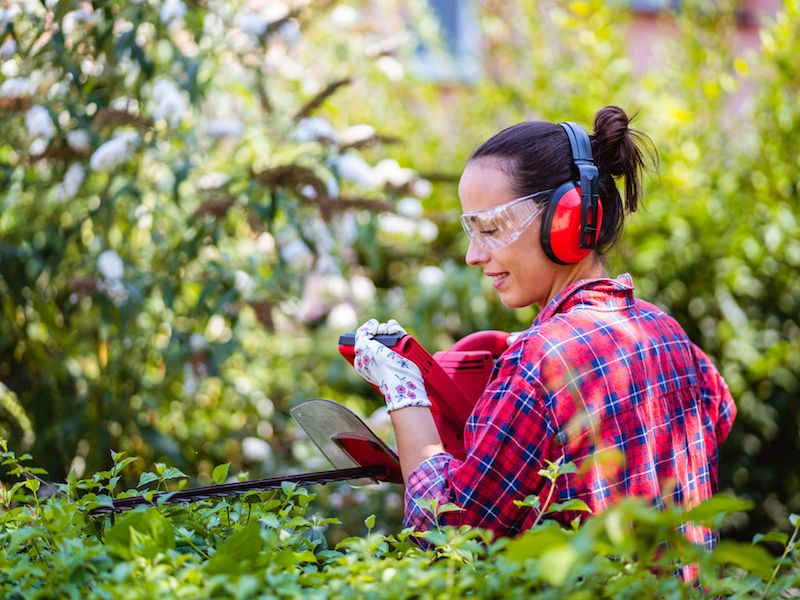
Eating right and safeguarding your hearing have some parallels. It sounds good, but not many of us have a good idea of where to start. If there aren’t any obvious noise dangers and you don’t consider your daily environment to be especially noisy, this is especially true. But your ears and senses can be stressed by daily living, so your auditory acuity can be preserved if you practice these tips.
If you want to continue to enjoy the sounds around you, you need to do everything you can to impede down the deterioration of your hearing.
Tip 1: Hearing Protection You Can Wear
Using hearing protection is the most practical and basic way to safeguard your ears. This means taking basic steps to reduce the amount of loud and harmful noises you’re subjected to.
This means that when it’s needed most people will want to wear ear protection. Hearing protection commonly comes in two basic forms:
- Ear Plugs, which are placed in the ear canal.
- Ear Muffs, which are put over the ears.
Neither form of hearing protection is inherently better than the other. There are positive aspects to each type. What’s important is that you get some hearing protection that you feel comfortable wearing.
Tip 2: Be Aware When Sound Gets Dangerous
But how can you be sure when to use hearing protection? We’re used to connecting harmful noise with painful noise. But much lower levels of sound can harm your ears than you might think. After just a couple hours, as an example, the sounds of traffic are enough to injure your hearing. Knowing when sound becomes dangerous, then, is a necessary step in safeguarding your hearing.
Usually sounds become harmful at the following thresholds:
- 95-100 dB: This is about the noise level you’d expect from farm equipment or the typical volume of your earbuds. After around 15-20 minutes this volume of sound becomes hazardous.
- Over 100 dB: This is where you can damage your hearing very quickly. Injury is done in about thirty seconds with anything over this limit. Rock concerts and jet engines, for example, can damage your hearing in around thirty seconds.
- 85 decibels (dB): After about two hours this level of sound is damaging.Your hairdryer or a busy city street are both circumstances where you will find this volume of sound.
Tip 3: Make Your Phone Into a Sound Meter
We can take precautions to minimize our exposure, now that we have an idea of what levels will be dangerous. But in real life, it can be difficult trying to measure what is too loud and what isn’t.
That’s where your smartphone can become a handy little tool. There are dozens of apps for iPhone, Android, and everything in between that turn your device’s microphone into a sound meter.
In order to get an idea of what hazardous levels of noise really sound like, use your sound meter to check the decibel level of everything you are hearing.
Tip 4: Keep an Eye on Your Volume Buttons
A smartphone with earbuds is usually the way people listen to music these days. This creates a dangerous scenario for your hearing. Your ears can be considerably harmed if you set your earbuds to high over a long period of time.
So monitoring the volume control means protecting your hearing. You should not increase the volume to drown out sounds elsewhere. in order to make certain that volume doesn’t get too high, we suggest using volume settings or app settings.
If your hearing begins to wane, earbuds can become a negative feedback loop; you could find yourself constantly increasing the volume of your earbuds in order to make up for your faltering hearing, and in the process doing more harm to your hearing.
Tip 5: Have Your Hearing Tested
You might think of a hearing exam as something you get when your hearing has already started to diminish. The issue is that it’s not always easy to detect a problem in your hearing without a baseline to compare results to.
Acquiring data that can be used for both diagnostic applications and for treatment can be best accomplished by scheduling a hearing exam and screening. This will give you a little extra perspective for future hearing choices and ear protection.
Keep an Eye on Your Ears
In a perfect world, protecting your hearing would be something you could do constantly without any difficulty. But there are always going to be obstacles. So anytime you can and as often as possible, protect your hearing. Also, get regular hearing examinations. Put these suggestions into practice to improve your chances.
